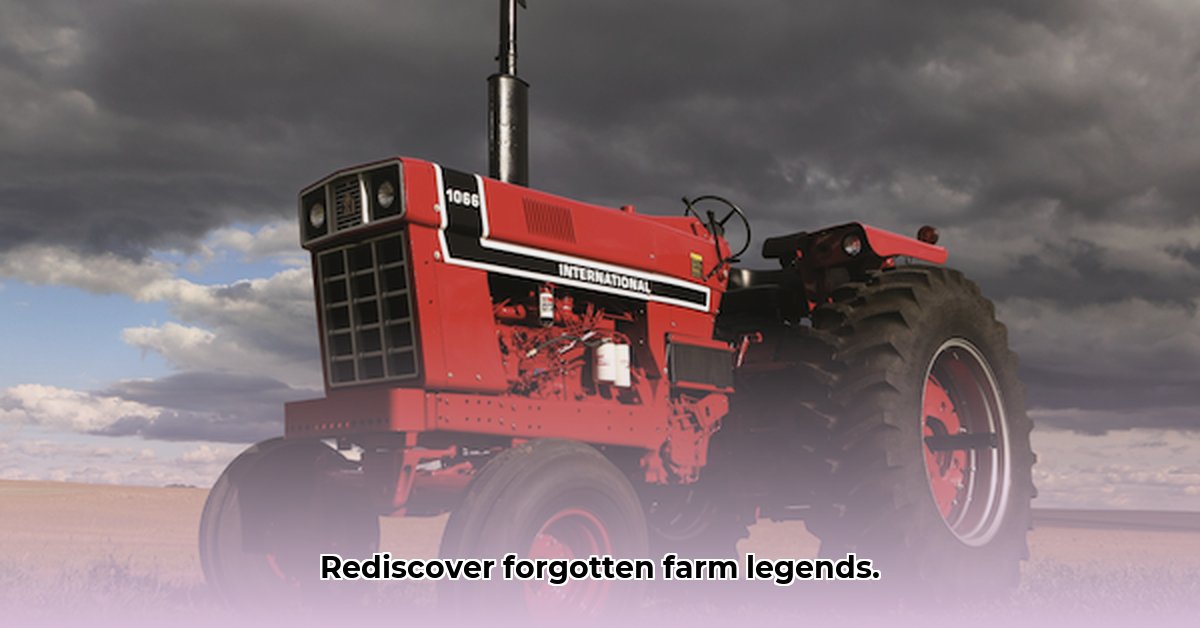
A Deep Dive into the History of Red Tractors
The iconic image of a red tractor evokes nostalgia and a strong connection to agricultural heritage. But why red? The vibrant hue wasn't a random choice; it was a powerful marketing strategy. In a crowded marketplace, a distinct color helped individual brands stand out, becoming easily recognizable in fields across the country. This simple yet effective tactic ingrained these brands in the minds of farmers, fostering lasting loyalty that continues to this day. Brands like Case IH and Massey Ferguson are more than just machines; they’re emblems of agricultural history, passed down through generations. Did you know the consistent use of red helped establish powerful brand recognition and enduring customer loyalty? For a deeper dive into red tractor history, check out this comprehensive guide.
The Giants of the Red Tractor World: Key Players
Several companies dominated the red tractor landscape, many of whom remain significant players. Let's explore some of these influential brands:
| Brand | Defining Characteristics | Historical Impact |
|---|---|---|
| Case IH | Renowned for powerful and dependable tractors with a vast selection of models. | A long history of leading innovation and setting industry standards. |
| Massey Ferguson | Known for their adaptability, durability, affordability, and global reach. | A true pioneer in tractor design and a global agricultural force. |
| Ford/New Holland | Early leader in tractor innovation, widely adopted and continuously evolving. | A cornerstone of the mechanization of American agriculture. |
| International Harvester (IH) | A major player in the mid-20th century, leaving a lasting imprint on the industry. | The predecessor to Case IH, its influence on tractor development remains undeniable. |
This is just a glimpse into a rich history. Many other companies contributed to the evolution of this essential piece of farm equipment.
Technological Advancements in Red Tractors
The success of these brands wasn't solely due to their color. Innovations in engine technology, hydraulic systems, and ergonomic designs significantly boosted efficiency and operator experience. The evolution from early 20th-century tractors to their modern counterparts is remarkable.
The Enduring Allure of Restoration
Restoring vintage red tractors is a deeply satisfying endeavor, connecting enthusiasts to agricultural heritage. It’s a rewarding hobby blending history, mechanics, and a connection to the land. Collectors seek these machines at auctions and online marketplaces, understanding the dedication and skill required for restoration. Is restoring a vintage tractor a rewarding project for you, combining historical preservation with mechanical skill?
Comparing Red Tractor Brands for Farm Efficiency
Choosing the right tractor involves more than aesthetics. Optimizing your operation for sustainability and profitability requires careful consideration. Key factors include fuel efficiency, maintenance costs, longevity, technological advancements, and parts availability.
Factors to Consider
Fuel Efficiency: Fuel consumption directly impacts operating costs. Look for tractors with modern, fuel-injected engines and efficient transmissions.
Maintenance Costs: Some brands are more expensive to maintain. Factor in parts, repairs, and servicing.
Longevity: A well-maintained tractor can last decades. Consider construction and material quality.
Technological Advancements: Precision farming technology can improve yields and reduce costs.
Parts Availability: Easy access to replacement parts is crucial, especially for older models.
Top Red Tractor Brands: A Quick Overview
While precise data on vintage tractor market share is scarce, several brands consistently stand out:
Mahindra: Known for affordability and reliability across a wide range of models.
Case IH: A long-standing brand synonymous with powerful and durable tractors.
Massey Ferguson: Well-established with a reputation for dependability and a broad range of models.
Branson: Popular choice for smaller farms and specialized applications, often featuring compact tractors.
Regional preferences significantly influence brand popularity.
Choosing the Right Tractor: A Step-by-Step Approach
Define your needs: Consider tasks, operation size, and budget.
Research: Investigate brands and consult owner reviews and industry publications.
Compare specifications: Carefully compare engine power, fuel efficiency, and maintenance requirements.
Consider long-term costs: Factor in fuel, repairs, and resale value.
Test drive (if possible): Gain hands-on experience before committing to a purchase.
Choosing a vintage red tractor involves careful consideration of various factors. Prioritize your needs and conduct thorough research to make an informed decision.